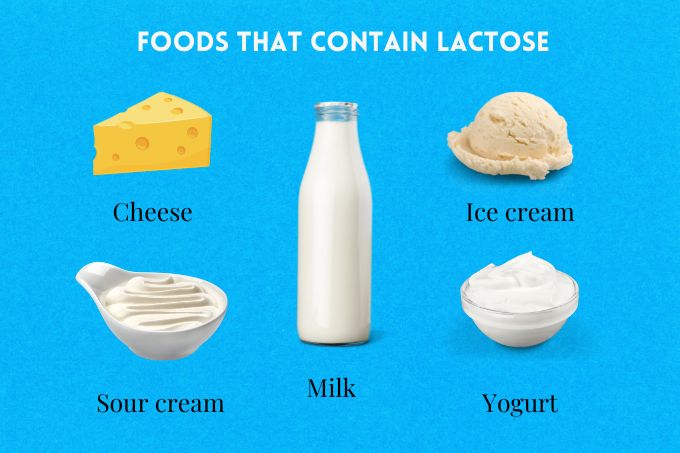This post may contain affiliate links, which means we may receive a commission from purchases made through these links. See our affiliate disclaimer.

While your dog loves the occasional dairy treat he gets (just like his human does!), you might have noticed he gets gassy and his poop gets soft after eating them.
You might want to hold the dairy treats and consider if your dog is lactose intolerant. But — are all dogs lactose intolerant?
Are all dogs lactose intolerant?
The short answer: not all dogs are lactose intolerant, but most are. Lactose intolerance is pretty common in dogs.
What is lactose intolerance?
Lactose is a type of sugar found mainly in dairy products. Before lactose can be digested, it needs to be broken down into simpler sugars, like glucose & galactose. An enzyme called lactase is necessary to make that breakdown happen. Without this enzyme lactose remains undigested, producing symptoms that are collectively known as lactose intolerance.
How dogs develop lactose intolerance
Puppies are not lactose intolerant. They get all their nutrients from their mother’s milk as newborns, and they have no problem digesting that milk. At about 4 weeks of age, they begin eating solid foods — a process known as weaning. This is around the same time their lactase levels begin to drop, and soon they develop lactose intolerance. Most adult dogs will have low levels of lactase and will not be able to tolerate dairy products, especially in large amounts.
Can dogs eat dairy products?
While most dogs aren’t able to digest significant amounts of milk, they can still get an occasional dairy treat. Small amounts of cheese & yogurt, especially if given occasionally only, are unlikely to cause bothersome symptoms.
Some dairy products contain more lactose than others. Cow’s milk and goat’s milk have the highest amounts of lactose per gram, and could therefore trigger lactose intolerance even if given in small quantities. We recommend avoiding cow’s milk and goat’s milk altogether.

Ice cream, yogurt, and sour cream contain less lactose, and cheeses contain the least lactose. Specifically a hard cheese, such as cheddar, contains very small amounts of lactose per gram. These dairy products would be a good choice for an occasional treat — again, in small amounts only. Lactose-free milk would also be an excellent choice for an occasional treat.
Signs of lactose intolerance in dogs
Not all dogs will exhibit the same signs of lactose intolerance. Some dogs may be more sensitive, showing the below signs after ingesting even small amounts of dairy products. Other dogs may be more tolerant, showing signs only after eating larger amounts of dairy.
The most common signs of lactose intolerance in dogs will be gastrointestinal in nature:
Dairy products that aren’t digested remain in the stomach for longer than they should. This can cause bloating, and, with larger volumes of dairy, can also result in vomiting. As the dairy products travel down from the stomach to the intestine in an undigested state, they cause irritation to the lining of the intestinal walls, resulting in flatulence and diarrhea.
What to do if your lactose intolerant dog eats dairy
The signs & symptoms of lactose intolerance in dogs last roughly 6 to 48 hours, depending on the amount of dairy products eaten.
If your dog eats a small amount of dairy, he should be fine. Observe him for the next few hours, and watch out for his stool. The stool will likely be soft, but your dog should be back to normal after that.
If your dog eats a large amount of dairy, you’ll need to observe him for about 48 hours. He may be gassy and have diarrhea during that time, but most dogs will be fine despite that. Make sure not to give him any more dairy products, any fatty food or any fiber. Instead, he should get a bland diet for the duration of the observation period — boiled chicken and rice will do the trick.
If your dog has too much diarrhea during the observation period, if he’s lost his appetite, if he’s lethargic or restless, or if the signs last more than 48 hours, you’ll have to see a vet as soon as you can. When in any doubt, best to play it safe and discuss with your vet.

